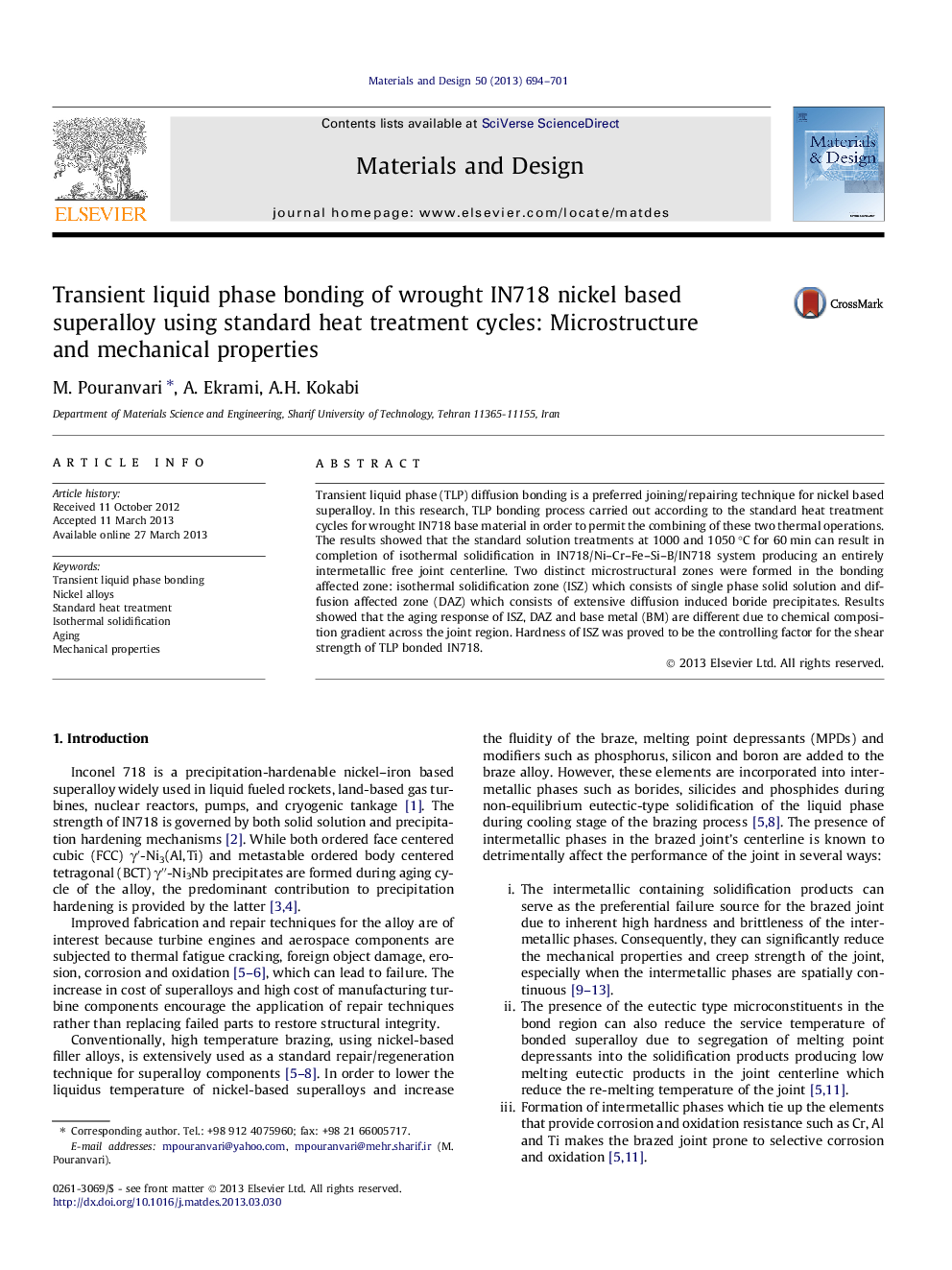| Article ID | Journal | Published Year | Pages | File Type |
|---|---|---|---|---|
| 829989 | Materials & Design (1980-2015) | 2013 | 8 Pages |
•Joining of IN718 superalloy using standard solution and aging heat treatment.•Intermetallic free joint centerline was obtained after solution treatment.•Extensive Cr–Mo–Nb based borides were formed in diffusion affected zone.•Different aging response in ISZ, DAZ and BM.•Shear strength is controlled by the hardness of ISZ.
Transient liquid phase (TLP) diffusion bonding is a preferred joining/repairing technique for nickel based superalloy. In this research, TLP bonding process carried out according to the standard heat treatment cycles for wrought IN718 base material in order to permit the combining of these two thermal operations. The results showed that the standard solution treatments at 1000 and 1050 °C for 60 min can result in completion of isothermal solidification in IN718/Ni–Cr–Fe–Si–B/IN718 system producing an entirely intermetallic free joint centerline. Two distinct microstructural zones were formed in the bonding affected zone: isothermal solidification zone (ISZ) which consists of single phase solid solution and diffusion affected zone (DAZ) which consists of extensive diffusion induced boride precipitates. Results showed that the aging response of ISZ, DAZ and base metal (BM) are different due to chemical composition gradient across the joint region. Hardness of ISZ was proved to be the controlling factor for the shear strength of TLP bonded IN718.
